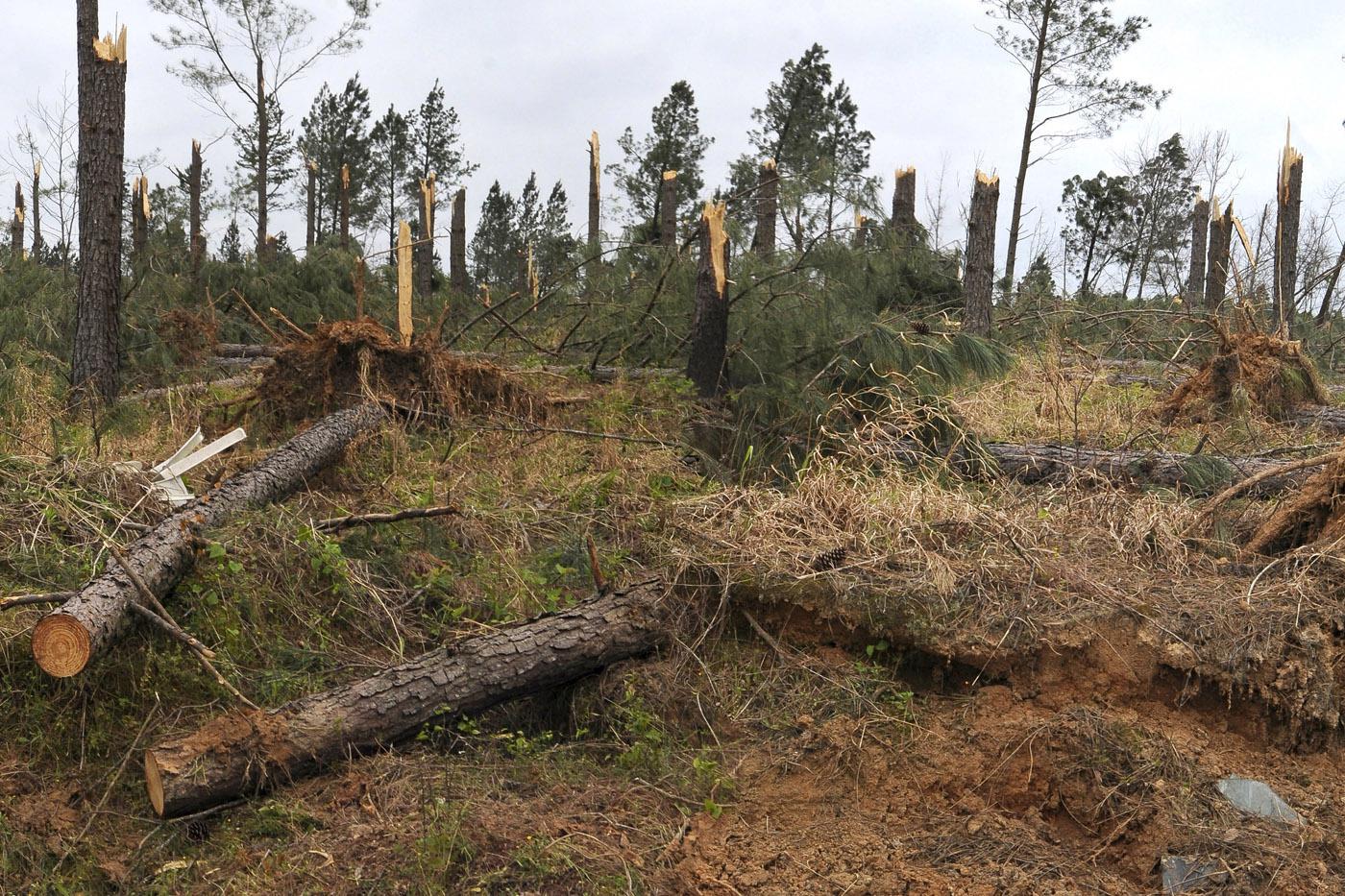Information Possibly Outdated
The information presented on this page was originally released on August 11, 2011. It may not be outdated, but please search our site for more current information. If you plan to quote or reference this information in a publication, please check with the Extension specialist or author before proceeding.
MSU study finds market exists for timber insurance
MISSISSIPPI STATE – The tornadoes that ripped through Mississippi this April damaged about 74,000 acres of forestland in 22 counties, racking up timber losses of more than $30 million. Most of that timber was uninsured, but the results of a survey conducted by Mississippi State University may help change that trend.
Steve Bullard was one of those uninsured. He owns 100 acres of timber in Webster County — 40 acres of 26-year-old plantation pine and 60 acres of mixed pine and hardwood.
“I consider my timber a complete loss,” Bullard said. “Once a tornado wipes a path through forestland, the timber is of little value, no matter the size, particularly after several weeks have gone by since the damage.”
The twisting of a tornado separates the rings of a tree, causing damage that may not be immediately apparent. The timber may look good, but it will split and separate at the rings once cut into boards and dried.
“It has been really difficult to salvage timber on our property,” Bullard said. “We have had several logging firms look at the timber, and we have been able to salvage some chip-n-saw timber. However, at this point, we just want someone to clear the land so we can replant.”
Bullard’s only other financial recourse is to file a casualty loss on his taxes.
“I can deduct the damaged timber as a casualty loss. However, the specific requirements for calculating the loss may result in low or no deduction,” Bullard said.
Timber insurance in case of natural disaster is available, but like Bullard, most Mississippi landowners do not purchase it. A study recently conducted by the Mississippi State University Forest and Wildlife Research Center looked at the reasons behind that tendency.
About 2,000 landowners with more than 100 acres in the state were asked how much they were willing to pay for standing timber insurance, given a 3 percent deductible. On average, respondents were willing to pay between $2.38 and $3.59 per $1,000 for standing timber insurance, which is much less than the premium rate of $6 per $1,000 currently available.
“While the majority of landowners are willing to pay for insurance, what they consider a fair price differs from the premium set by insurance companies,” said Ian Munn, MSU forestry professor.
This partially explains the under-insurance phenomenon for natural disaster risks among landowners.
“From the insurance companies’ perspective, there is very little information about what premium rates are affordable and attractive to landowners,” Munn said. “Very few insurance companies currently offer standing timber insurance. Without knowing how much individuals are willing to pay for coverage, insurance companies may find it difficult to set attractive premiums.”
Munn said there is a good market for timber insurance in Mississippi.
“Despite the fact that the current premium rate is well above the willingness to pay, the market for standing timber insurance is still attractive,” Munn said. “Considering that in Mississippi there are more than 25,000 landowners with properties larger than 100 acres, even if a small proportion of landowners are willing to pay the required premium rates, there would be a substantial market for standing timber insurance in the United States.”
The study also uncovered how landowner characteristics impact insurance demand.
“Without this information, insurers are unable to judge which landowners are likely to purchase standing timber insurance and target their insurance products accordingly,” Munn said.
“As expected, the more risky that landowners perceived forestry investments to be, the more willing they were to pay for timber insurance,” Munn said. “Those whose primary objective was to generate revenue from their timber were also willing to pay a higher premium.”
Landowners with many years of management experience were less willing to pay for insurance.
“The most unexpected outcome of the survey was that suffering a loss from a natural disaster did not make landowners more or less likely to purchase standing timber insurance,” Munn said.
Other factors that did not impact an individual’s willingness to pay for timber insurance included ownership size, age and region of the state.
Contact: Dr. Ian Munn, (662) 325-4546







